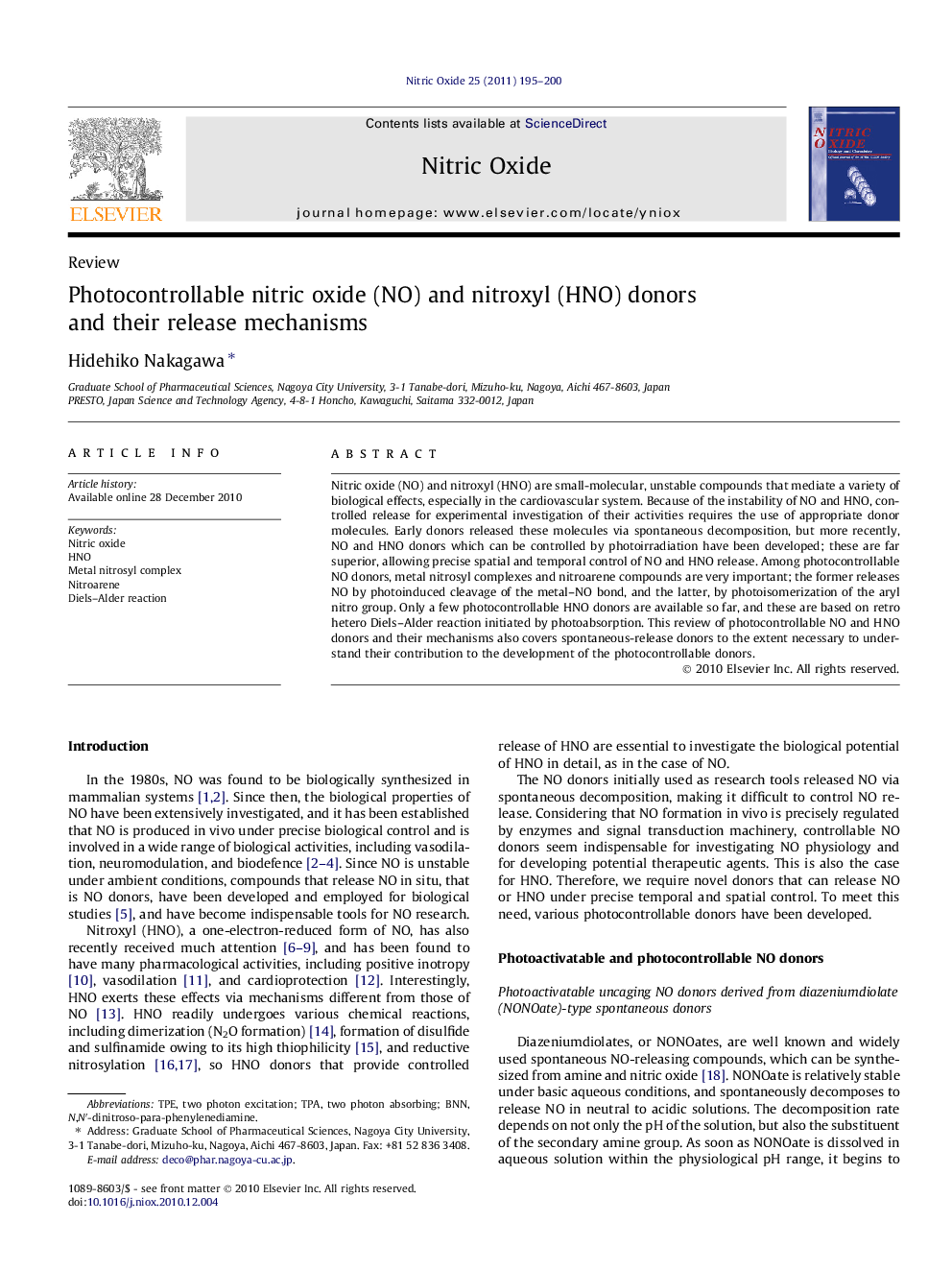| Article ID | Journal | Published Year | Pages | File Type |
|---|---|---|---|---|
| 2001617 | Nitric Oxide | 2011 | 6 Pages |
Nitric oxide (NO) and nitroxyl (HNO) are small-molecular, unstable compounds that mediate a variety of biological effects, especially in the cardiovascular system. Because of the instability of NO and HNO, controlled release for experimental investigation of their activities requires the use of appropriate donor molecules. Early donors released these molecules via spontaneous decomposition, but more recently, NO and HNO donors which can be controlled by photoirradiation have been developed; these are far superior, allowing precise spatial and temporal control of NO and HNO release. Among photocontrollable NO donors, metal nitrosyl complexes and nitroarene compounds are very important; the former releases NO by photoinduced cleavage of the metal–NO bond, and the latter, by photoisomerization of the aryl nitro group. Only a few photocontrollable HNO donors are available so far, and these are based on retro hetero Diels–Alder reaction initiated by photoabsorption. This review of photocontrollable NO and HNO donors and their mechanisms also covers spontaneous-release donors to the extent necessary to understand their contribution to the development of the photocontrollable donors.
